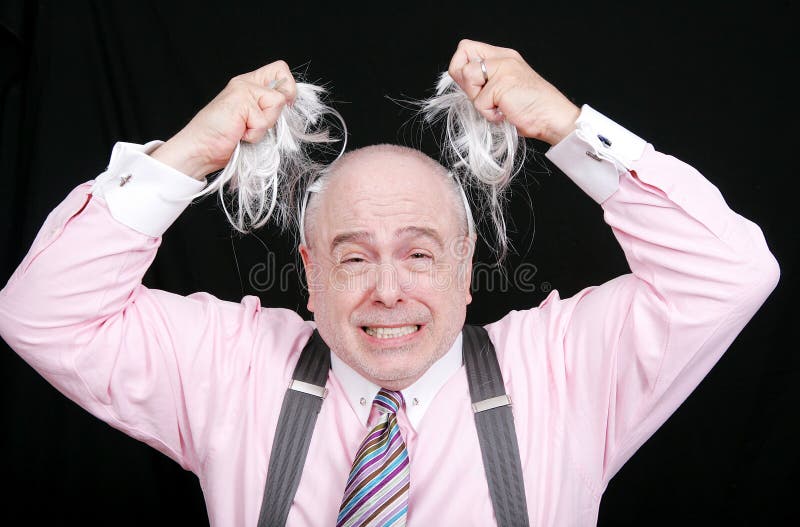Table Of Content

Anyone who frequently wears a tightly pulled hairstyle can develop hair loss. In fact, there’s actually a medical term for this type of hair loss. A dermatologist is a medical doctor who specializes in treating the skin, hair, and nails.
What Causes Hair Loss?
Treatment of other behaviours such as thumb sucking may also be helpful. In some cases, people engage in “rituals” after pulling, such as rolling the hair between their fingers, touching it to their lips or face, or inspecting the end to look at the root. Other people with trichotillomania eat their pulled hairs, a condition known as trichophagia.
Woman seen violently tugging on people's hair in Tompkins Square Park - WABC-TV
Woman seen violently tugging on people's hair in Tompkins Square Park.
Posted: Sun, 04 Jun 2023 07:00:00 GMT [source]
How is trichotillomania diagnosed?
The sufferer often feels a sense of imminent danger or impending doom and an urge to escape. You can search by location, condition, and procedure to find the dermatologist that’s right for you. If you want to diminish a noticeable scar, know these 10 things before having laser treatment. If you have what feels like razor bumps or acne on the back of your neck or scalp, you may have acne keloidalis nuchae. There is information on treatments and self-help advice on the OCD UK website.
When to see a doctor
Located in West Hollywood, Mare is a full-service salon founded by stylists Mara Roszak and Denis De Souza. The bright and airy space is home to some of Los Angeles's most talented stylists. When it comes to planning your next haircut, finding the best hair salon to visit can be a pain in the ass. (You also want to make sure you're not stumbling across a spot with shady practices.) We know the struggle all too well, which is why we're here to help. Free to everyone, these materials teach young people about common skin conditions, which can prevent misunderstanding and bullying.
Husband who murdered wife spent her life insurance on sex doll
CBT is the primary psychotherapeutic approach, focusing on identifying triggers, developing coping strategies, and replacing hair-pulling behaviors with healthier alternatives. Some individuals with trichotillomania may turn to substances like alcohol or drugs as a way to cope with emotional challenges, leading to potential substance use disorders. Studies have shown that people living with trichotillomania are likely to engage in episodic or frequent episodes of eating hair (trichophagia). About 5%–20% of people with trichotillomania also have trichophagia. Trichotillomania (TTM) is a mental disorder in which people feel an overwhelming need to pull out their own hair. Talk with your health care provider about any medicine recommended.
Cognitive-behavioral therapy (CBT):

The Westwood Institute for anxiety Disorders is extending our services to online and telephone therapy to clients around the world struggling with OCD and related disorders. This method is cost-effective, which benefits clients with restrictions that do not allow them to leave their homes. The American Psychological Association has provided distance therapy to be safe and reliable. Furthermore, there are numerous studies and client testimonies that have indicated success through this method.
This condition falls under the classification of obsessive-compulsive disorder (OCD). When it’s severe, it often has extremely negative effects on a person’s happiness, well-being and overall quality of life. Another form of therapy to treat trichotillomania is cognitive behavioral therapy (CBT). CBT goes hand in hand with HRT but is a deeper dive into the thoughts behind a person’s hair-pulling. Trichotillomania (TTM) is sometimes related to certain mental health conditions, such as anxiety and depression.
This creates a cycle of anxiety, hair pulling, temporary relief then anxiety, embarrassment, and hair pulling again. ADHD is a mental health condition that affects focus, attention, activity, and concentration. While ADHD is not an impulse control disorder like trichotillomania, it can cause problems with impulse control.
Cognitive Behavioral Therapy

We hope that this message speaks out to anyone who has been struggling with hair pulling or skin picking, and that you can acquire a newfound confidence that treatment works. Anyone who feels distressed about their hair-pulling or feels that they are unable to control the behavior on their own could benefit from seeking treatment. Therapy, combined with self-help strategies and social support, can greatly reduce pulling behaviors, help manage shame, and improve quality of life.
The repetitive motions involved may also, in some cases, trigger joint injury or muscle pain. The available research, while limited, shows that people with TTM have this condition for an average of about 22 years. People also often describe that the condition has phases, becoming more or less severe for periods of time. Overall, early diagnosis and treatment are the best chance for limiting how long this condition lasts and how severely it impacts your life.
The most common method of hair pulling amongst sufferers is to use their fingers. However, some sufferers also use tweezers or other instruments. A psychiatric evaluation may also necessary but may be difficult in young children.
At the Westwood Institute for Anxiety Disorders, we also treat a range of other clinical conditions, especially anxiety and compulsive disorders. These include Panic Attacks, General Anxiety Disorder, and Trichotillomania. Most of the time, people with trichotillomania pull out their hair with their fingers, but you might also use tweezers or other tools. Trichotillomania is estimated to affect up to 4% of the general population. It can affect males and females of any age but is more common in children than in adults. Peak of onset usually occurs in the pre-school years and also in early adolescence, usually around the time of puberty.
The body area that hair is pulled from can vary, and commonly include the scalp, eyebrows, and eyelashes. Usually, the sufferer first has a sense of tension that is related to resisting the urge to pull. There is often also a sense of pleasure or soothing from the pulling itself.
They also learn to identify the factors that lead to hair-pulling as well as the repercussions of the behavior. While the repetitive and compulsory actions of hair-pulling disorder can look like those in OCD, they are different. Additional complications include social isolation from hiding to pull out hair and financial effects from being unable to continue with normal daily activities like going to work. Trichotillomania comes with many physical and emotional complications, which are usually a result of excessive hair-pulling. Those who have symptoms may feel embarrassed or afraid to talk to their doctor about what they are experiencing.


